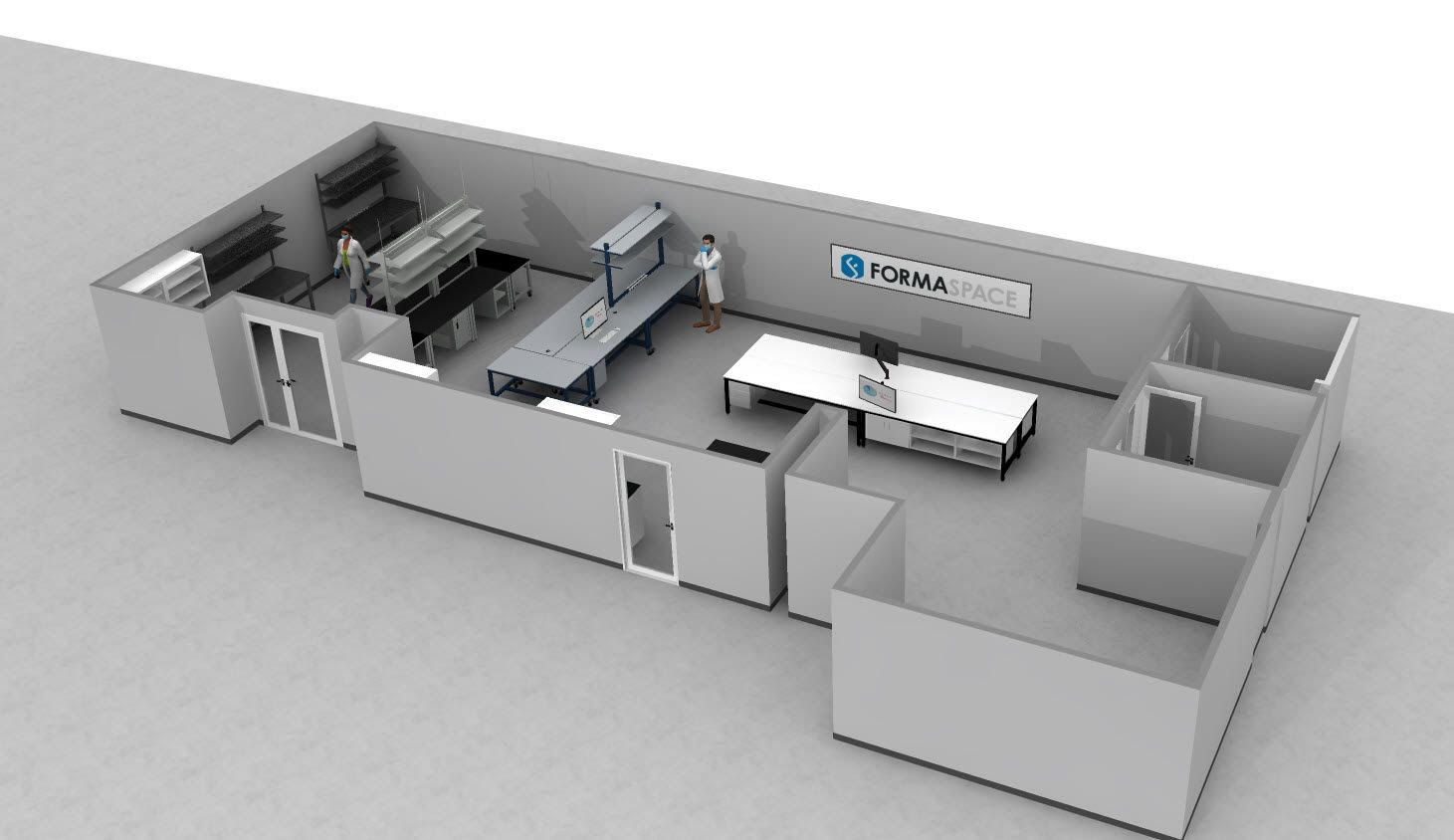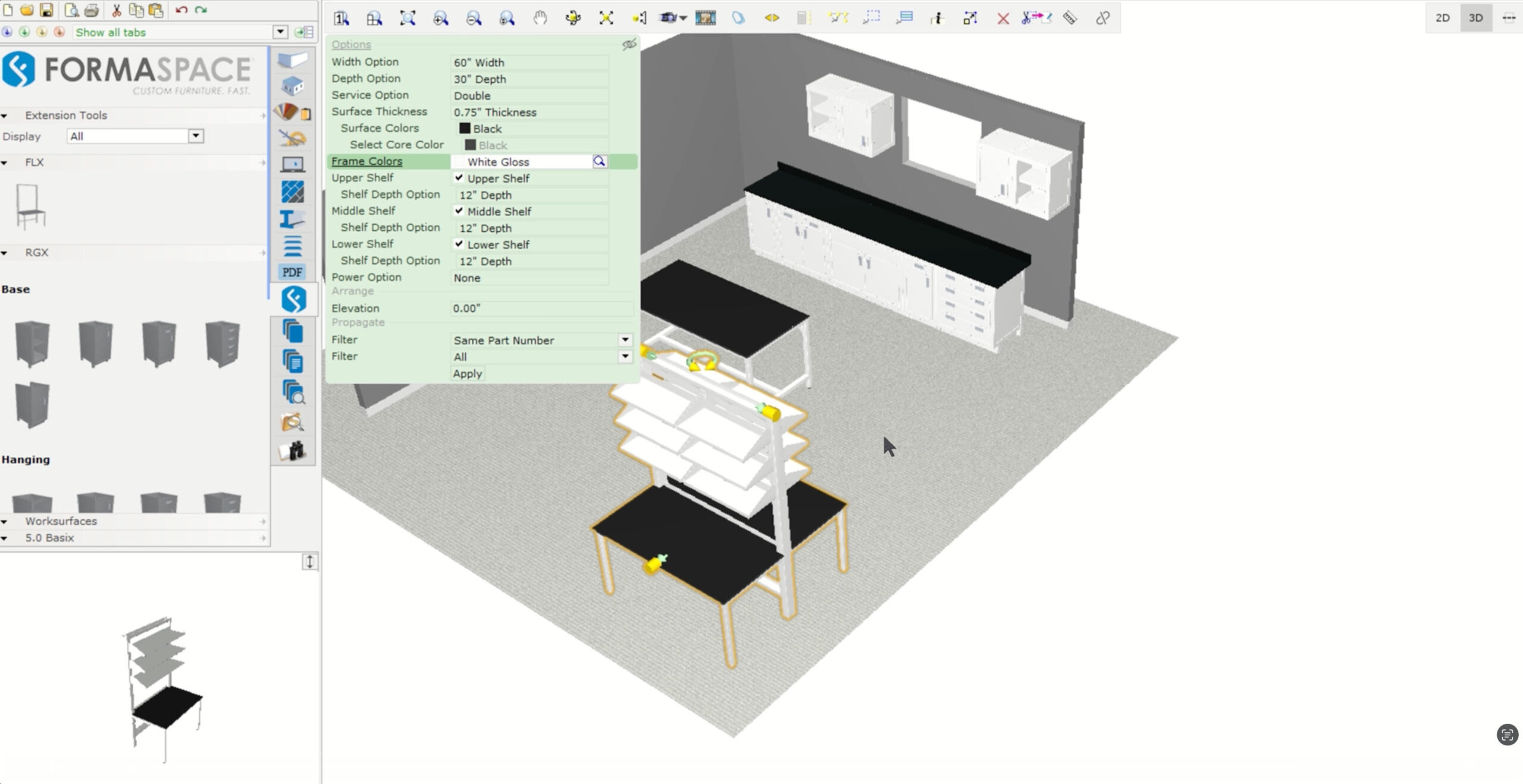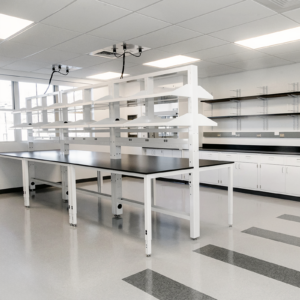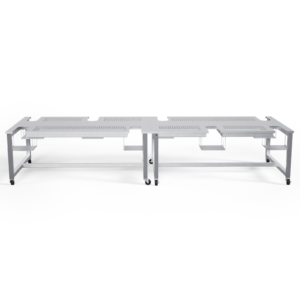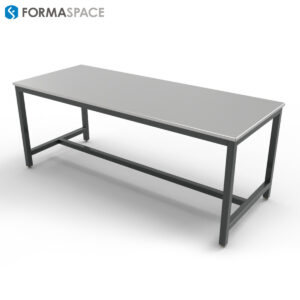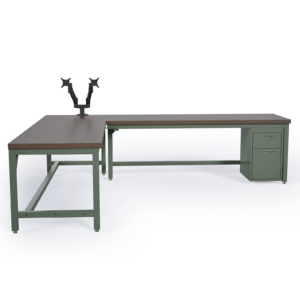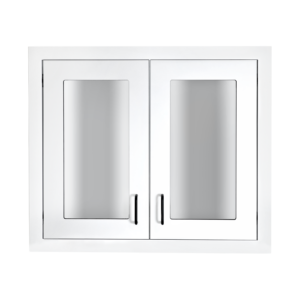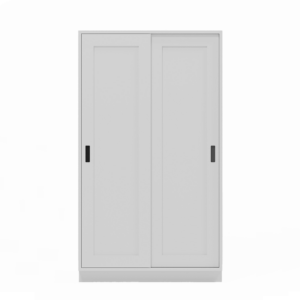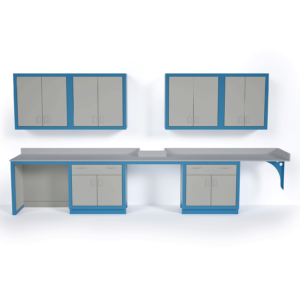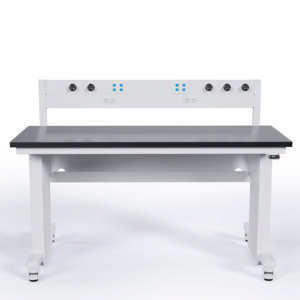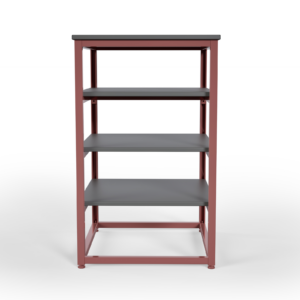Design tools have always played a pivotal role in how furniture manufacturers, dealers, and designers collaborate. Among these tools, CET (Configura Extension Technology) continues to emerge as a game-changing platform, particularly in the contract furniture market. While its impact has been most visible in office furniture, the growing adoption of CET in niche markets like laboratories, healthcare, and life sciences is creating new opportunities for manufacturers and decision-makers alike. Formaspace is proud to be among the first lab and industrial furniture manufacturers to launch a dedicated CET extension—further demonstrating our commitment to innovation and staying ahead of industry needs.
From Office to Lab: How CET Became the Industry’s Secret Weapon
CET has revolutionized the furniture industry by simplifying the design and specification process. Unlike its predecessors, CET consolidates multiple functions—quoting, rendering, and layout design—into a single tool. This integration allows manufacturers to equip dealers with the ability to design complete spaces independently.
“CET empowers dealers to create designs, quotes, and renderings in real time without extensive back-and-forth with manufacturers,” notes Corey Hutchins, COO at Formaspace. “It’s a critical tool for maintaining competitiveness and meeting the growing demand for speed in the market.”
This capability is particularly advantageous for modular and flexible solutions—a trend dominating modern workspaces. Tools like CET allow designers to move faster and smarter, adapting layouts with ease to keep spaces functional and future-ready.
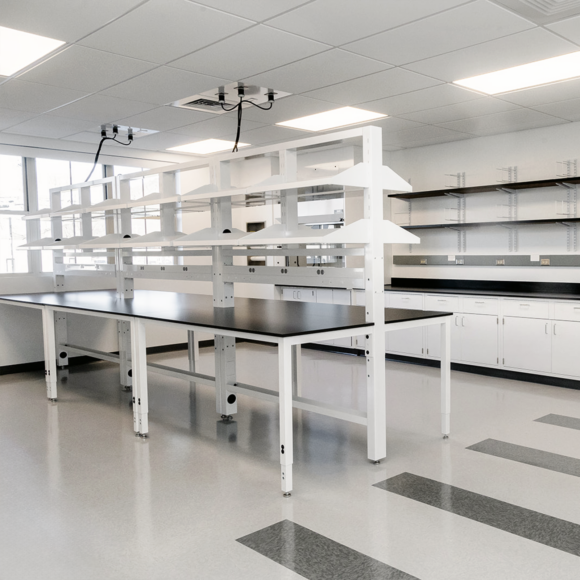
CET Moves Into the Lab: A New Frontier for Specialized Spaces
While CET is well-established in the office furniture sector, its adoption in lab and healthcare spaces is still emerging. These industries, with their unique requirements, present both challenges and opportunities for CET.
Benefits for Specialized Markets
Matt L., Lead Industrial Designer at Formaspace, emphasizes the unique advantages CET offers for lab furniture:
“The Formaspace extension includes both fixed casework and freestanding workbenches, enabling lab designers to visualize their specific room layouts and equipment clearances all within the same catalog. This empowers earlier, more confident decision-making.”
This capability is invaluable for lab managers, facility decision-makers, and architects who often juggle complex specifications. By enabling early visualization, CET reduces the risk of costly mistakes and accelerates project timelines.
Growing Pains: What’s Holding CET Back in Lab and Healthcare
Despite its potential, CET faces hurdles in these specialized markets. According to industry feedback, many users desire more extensive content in the CET library. Krysele M., who manages Formaspace’s CET presence, observes, “There’s excitement behind our CET integration, but users want more content. This feedback has led us to expand our catalog, including adding new RGX accessories and a robust 5.0 product line.”
Unlike typical office products, lab and life science furniture often requires significantly more configuration options, making the development and setup of CET models far more elaborate. Formaspace did not shy away from this complexity—choosing to incorporate even its most intricate product lines, like RGX, into the platform to ensure users can design with full flexibility.
Design Smarter, Quote Faster: The Efficiency Power of CET
One of the standout benefits of CET is its ability to streamline operations for manufacturers and dealers. By enabling real-time design and quoting, CET reduces reliance on manual processes, minimizing errors and improving overall efficiency.
For example, a recent $28,000 project was completed entirely through a dealer’s CET design in about 30 min without requiring manufacturer involvement and multiple rounds of revisions. This efficiency not only saves time but also allows manufacturers to focus resources on innovation and scaling production.
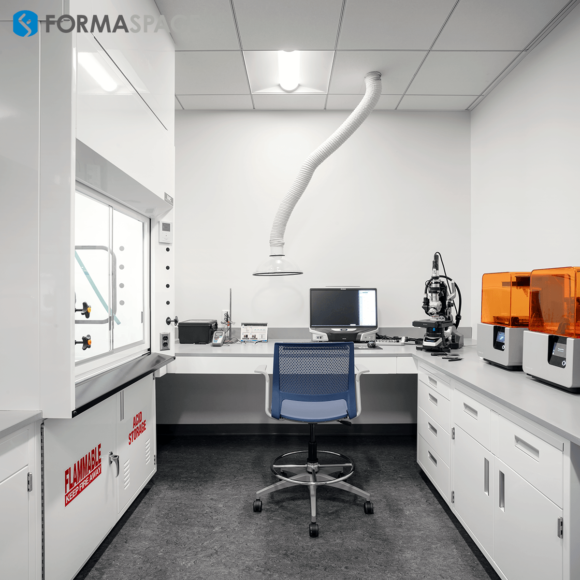
Looking Ahead: What’s Next for CET in Labs and Healthcare
The future of CET lies in its ability to evolve and cater to specialized industries. As healthcare and life sciences spaces increasingly emphasize modularity and aesthetics, tools like CET can help bridge the gap between functionality and design.
Matt L. highlights the possibilities:
“CET’s development can better support specialized industries by addressing unique needs such as equipment integration and custom utilities. Formaspace is staying ahead by expanding our CET catalog and incorporating feedback directly into our updates.”
Smart, but Simple: Making CET Work for Every Designer
One of the challenges of CET integration is balancing advanced features with accessibility. Matt L. notes, “The biggest challenge is developing a tool robust enough for power users while still serving as a training platform for junior designers. Simplifying the quote-to-sales-order workflow while minimizing errors is key.”
Krysele M. adds, “Beta testing and user feedback are crucial for shaping our next steps. By identifying bugs and gaps, we ensure that our CET library continues to evolve to meet user needs.”
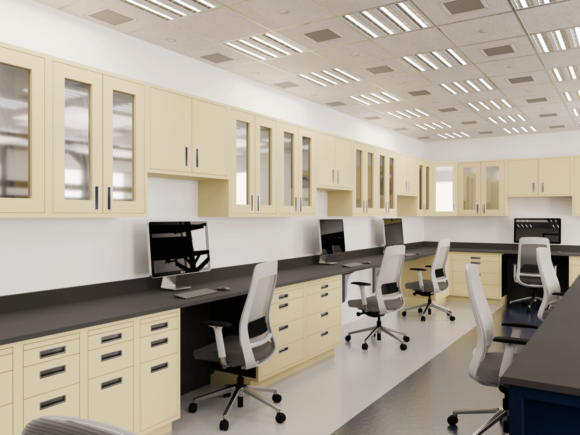
CET at a Glance: Benefits, Drawbacks, and What to Expect
Pros:
- Efficiency: Streamlines design, quoting, and layout processes.
- Flexibility: Supports modular and future-proof designs.
- Error Reduction: Minimizes manual transcription errors.
- User Empowerment: Enables dealers and designers to work independently.
Cons:
- Content Gaps: Specialized industries require broader and more tailored catalogs.
- Learning Curve: Designers need proper training to maximize CET’s potential.
- Development Costs: Building and maintaining a CET library demands significant investment.
What CET Means for You: Lab Leaders, Architects, and Dealers
For Lab Managers and Decision-Makers:
CET offers a way to enhance laboratory efficiency and adaptability. By visualizing layouts early, managers can optimize space and avoid costly changes during construction.
For Architects and Designers:
CET simplifies collaboration, allowing architects and designers to integrate lab and healthcare furniture seamlessly into their plans while maintaining a cohesive aesthetic.
For Dealers and Independent Reps:
The tool empowers dealers to work more autonomously, reducing delays and improving responsiveness to client needs.
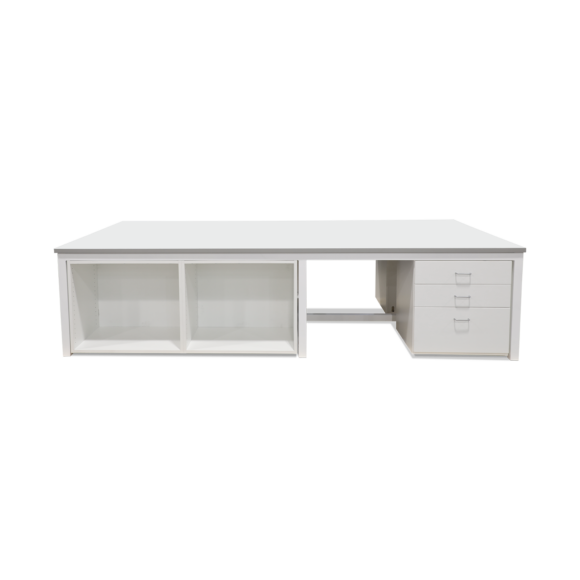
The Bottom Line: CET Is Raising the Bar for Lab and Healthcare Design
CET is more than just a design tool; it’s a platform reshaping how furniture is designed, specified, and sold. For niche markets like labs and healthcare, its potential to drive efficiency and innovation is immense. While challenges remain, continuous development and user feedback ensure that CET stays ahead of industry needs.
By integrating CET into their workflows, manufacturers, dealers, and decision-makers can not only keep up with trends but also lead the way in setting new standards collaboration and efficiency in the furniture market. Formaspace’s journey with CET highlights the value of investing in such platforms to meet the evolving demands of specialized industries.
If you are curious to learn more about Formaspace CET extension schedule a free CET training with our expert Lab Planner.
🕚 https://calendly.com/formaspace/cet-workshop
Formaspace is Your Laboratory Research Partner
Evolving Laboratories. It’s in our DNA.
Talk to your Formaspace Sales Representative or Strategic Dealer Partner today to learn more about how we can work together to make your next construction project or remodel a success.


